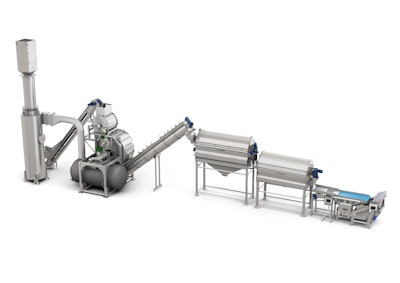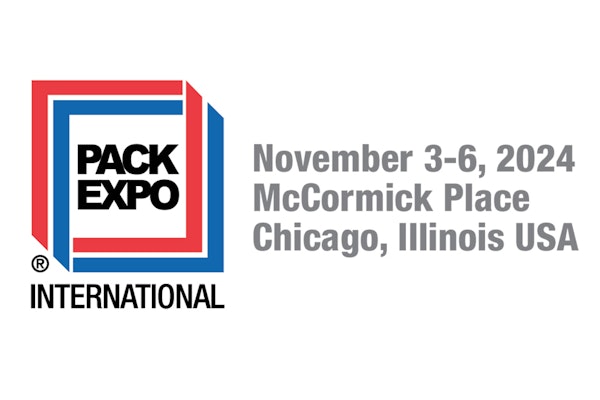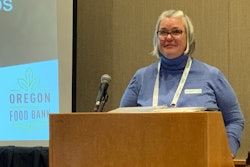
With food being grown, processed and shipped to farther destinations to meet growing global demand, the quality and safety of food is becoming more important to a larger number of consumers. Plus, because populations around the world are increasingly residing in cities, these urban dwellers are relying more on easy-to-prepare-and-eat foods. So it’s a tall order for processors to produce a bigger amount of better and safer foods than ever before.
Yet, food recalls are on the rise, according to a recent report by the U.S. Department of Agriculture’s Economic Research Service. The 31-page study, titled Trends in Food Recall, 2004-13, analyzes data from FDA and USDA’s Food Safety and Inspection Service. The report found one of the top five reasons for recalls during this time period was due to the potential presence of extraneous materials.
And the cost to respond to a recall can be huge. According to a recent industry study by the Food Marketing Institute and the Grocery Manufacturers Association, a food company, on average, spends about $10 million in direct costs when dealing with a recall, and that’s not including the additional costs of lost sales or brand reputation damage.
To reduce the tremendous risk associated with foreign material contamination, inspection, detection and sorting equipment can be indispensable. But even if one or all systems are being used, there are a number of factors that could keep plants vulnerable to food safety or quality issues. However, new technology is being employed by equipment manufacturers to help processors meet their operational goals.
Inspecting food from the farm
With more consumers wanting less processed food, fresher and healthier products are in high demand. But ingredients fresh off the farm can pose significant quality and safety issues if the items aren’t properly inspected from the start.
Potatoes are one example. This type of produce is experiencing more popularity around the world, and the potato processing market is predicted to grow from $22.74 billion in 2016 to $30.85 billion by 2022, according to a recent report by Research and Markets.
“The predicted continued growth in the global potato processing market presents both challenges and opportunities for processors,” says Jim Frost, TOMRA sorting food product manager. “With food safety standards rightly continuing to rise and food waste still a significant global issue, our response in the shape of the evolved TOMRA 5A lets potato processors address those factors and gain the best possible return from the anticipated growth of the market.”
The TOMRA 5A removes more than 98 percent of typical foreign objects found after washing and peeling. The machine uses top and bottom sensor banks to view each object while traveling through the product stream. Foreign objects are detected with 1 mm precision, achieved via the combination of pulsed LED, camera, Near InfraRed and advance analysis.
Frost says the TOMRA 5A sorter aims to take out unacceptable material as early as possible in the processing line by using smart rejection technology to expand the range of removable foreign objects, including heavy and floating stones, corn cobs, wood, glass, plastic, golf balls, metals and more.
The TOMRA 5A also has two reject exits. The first is for foreign objects and unusable product to be removed early in the processing process. Catching these items earlier can not only deliver greater yields, but also can boost operational efficiencies because foreign objects have less chance to cause damage to cutting equipment or shut down a line.
The second reject exit is for removing defective produce, some of which may still be usable. Having this capability can help manufacturers reduce food waste because the defective produce might have been wasted in previous sorting processes, but can now be removed and reworked for reintroduction on the normal processing line.
Also, the TOMRA 5A has a new graphical user interface, called TOMRA ACT, which helps potato processors to gather and analyze data in real time. This allows processors to monitor the equipment’s ongoing performance to ensure it is delivering optimal sorting and removal rates. If any issues are detected while operating, an alert will sound to remedy the situation.
Another company targeting the potato sorting market is Key Technology, which recently introduced its VERYX digital sorters equipped with the patented Sort-to-Grade (STG) software for both wet and frozen potato strips. STG was released four years ago for Key’s legacy sorters.
“Since then, we’ve been continually refining the software to enhance its functionality and process value,” says Marco Azzaretti, advanced inspection systems product manager at Key Technology. “This powerful software is field proven to deliver the required grade at the maximum process yield.”
STG analyzes surface defects and the dimensional characteristics of every individual strip. The processor sets the spec, and strips that are either too short or too long are rejected. STG can also manage the distribution of strip lengths within multiple user-defined categories or “length bins.” If the grade allows for a given percentage of all strips to be between X and Y in length, another percentage to be between Y and Z in length, and so on, STG will make accept or reject decisions to deliver the required length profile.
“This length-sorting capability has game-changing implications — it means a processor can eliminate mechanical length-grading equipment,” says Azzaretti.
This would allow processors to free up precious floor space by getting rid of unnecessary equipment. Plus, because an intelligent length-grading digital sorter can remove foreign materials at the same time as it is length grading, it offers time savings as well.
The processor can also determine, dictated by the target grade, to allow a certain amount of minor defects to pass through. Thus, complex final product specifications are maintained without involving the operator, and the level of precision can increase yields by 1 to 3 percent.
Because of the intelligent STG software algorithms, manual adjustments, as needed in traditional applications, are not needed to accommodate fluctuations in the quality of products. This means tighter controls on final grade specifications in terms of length and product defect are maintained.
“Like cruise control on a vehicle, STG automates adjustments to dynamically maintain a consistent outcome despite constant variations in incoming product quality characteristics. Our powerful STG algorithms far surpass a human’s ability to manage the sorter,” adds Azzaretti.
Improving metal detectors
Stainless steel is a popular material choice for food production environments because of its sanitary qualities. However, for those plants that use metal detectors to inspect food for foreign material, stainless steel can pose a food safety risk because it is more difficult to detect than ferrous metals, such as iron and steel, or nonferrous metals, such as copper or zinc.
Metal detectors work by monitoring disturbances in an electromagnetic field caused by magnetic and conductive characteristics of material passing through. Ferrous metals are both magnetic and good electrical conductors, which make them easy to detect. Nonferrous metals aren’t magnetic, but they’re good conductors.
Stainless steel is nonmagnetic and also a poor electrical conductor compared to other metal types, which makes it the most difficult metal to detect. In real-world applications, a sphere of stainless steel hidden in a dry product would typically need to be 50 percent larger than a ferrous sphere to generate similar signal strength. That disparity can rise from 200 to 300 percent when inspecting wet product with conductive characteristics.
Fortress Technology set out to overcome this inspection challenge with its new Interceptor metal detector. Designed to inspect conductive applications, such as meat, poultry, seafood, bakery items and fortified cereals, the Interceptor minimizes false rejects and offers up to a 100 percent improvement in detection capabilities with stainless steel.
Most metal detectors tune into specific frequencies, but the Interceptor cuts out background interference. By splitting and simultaneously analyzing the low-frequency and high-frequency signal, the Interceptor can differentiate between the signal generated by the product as a result of moisture or mineral content and any metal contaminant, regardless of the metal particles’ size, shape and orientation. Additionally, the Interceptor learns and recalls the signature of any given product with one pass.
Building on the same method of analyzing multiple frequencies simultaneously, Thermo Fisher Scientific introduced the Sentinel multiscan metal detector to increase the probability, up to 100 percent for many applications, of identifying a metal contaminant.
“In the past, food manufacturers using single- or dual-frequency metal detectors were forced to compromise,” explains Bob Ries, lead product manager, X-ray inspection and metal detection for Thermo Fisher Scientific. “Different metals are more or less detectable at different frequencies, and running one low and one high frequency does not necessarily overcome the challenge. With multiscan technology, users run the equivalent of five metal detectors at once, all scanning for different metal contaminants.”
Because the multiscan technology allows processors to select up to five frequencies, from 50 to 1,000 kHz, much smaller contaminants, up to 50 percent smaller in volume, can be identified than was possible in previous technologies.
“An important benefit of multiscan technology is the ability to overcome phasing, ensuring that the signal from an unwanted piece of metal is not missed because it matches up exactly with the product phase angle,” says Ries. “When five frequencies are running at once, if one frequency means a piece of metal is phased out, another frequency will detect it. There is virtually no risk of escape.”
Additionally, because the Sentinel metal detector was designed with a high signal-to-noise ratio, it overcomes noise challenges and can focus on finding the metal signal by using noise filters and other internal electronics.
Dairy products pose another challenge to metal detectors because they create a significant signal in the balanced field, known as product or bulk effect.
“Some dairy products generate signals that can cause typical metal detectors to detect metal where there is none,” explains Ray Spurgeon, metal detection product manager for Eriez. “Our Enhanced Platform (EP) for the Xtreme Metal Detector ignores these signals to keep production moving while maintaining product purity by identifying the smallest of metals.”
EP is a 3-D processing method that examines the full product signal and identifies irregularities, which Eriez says improves metal sensitivity while reducing false trips. This is because most balanced coil-designed detectors employ 2-D boundary detection. A balanced coil metal detector is a balanced field, so when the metal signal exceeds the product boundary, detection is triggered. But conductive or dense food, like dairy products, generate significant signals in the field that need to be “phased out” using 2-D processing. Simply put, if a conductive product does contain metal, the metal might not be detected.
But with Eriez’s EP, the metal detector looks at a 3-D representation of product signals and from this can see key product features that are not visible using standard boundary techniques. This is why Eriez says the EP improves metal sensitivity by up to 300 percent, even in traditionally challenging applications, such as 40-pound blocks of cheese and large containers of cultured products.
To combat product effect, METTLER TOLEDO's Profile Advantage system uses multisimultaneous frequency to offer very high sensitivity with low false rejects on products that typically create a signal that could trigger a reject.
“This system is ideal on foods like bulk chicken or cheese where there is high moisture, salt content or changing temperatures, like bread starting frozen, then is hot [when] freshly baked,” says Sarrina Crowley, marketing manager for METTLER TOLEDO.
The multisimultaneous frequency technology analyzes product signal data captured across a wide spectrum of frequencies simultaneously. This is processed by METTLER TOLEDO’s 3S software algorithm, which boosts the system’s sensitivity by up to 50 percent compared to competing technologies, according to the company.
X-ray for all
When detecting more than metal is of utmost importance, processors might employ advanced X-ray food inspection systems. However, many smaller food plants might not have considered purchasing X-ray equipment in the past because the high cost and operational demands might have been too prohibitive.
Recently, Eagle Product Inspection released the EPX 100, aimed at small and midsized manufacturers looking for an entry point in X-ray inspection. The company says the low-energy EPX 100 is run by software and system controls that are intuitive and make the system easy to operate and maintain.
Because even very small food businesses have to be in compliance with the Food Safety Modernization Act’s Preventive Controls rule now, many smaller companies might be looking to add X-ray to their operations. For many years, processors have stayed compliant with their food safety plans and validation and verification programs by using X-ray systems to inspect food products at several critical control points in plants to find and reject contaminants as well as collect product data that can be reproduced rapidly if there is a food safety issue or recall.
X-ray systems can also help processors making meal kits ensure they are safe and of high quality. Meal kits have grown in popularity in recent years, but these types of products can be particularly challenging to inspect because they use multiple ingredients that are packaged in different compartments. Plus, many meal kits use a variety of packaging materials, such as trays, films, small pouches, metal seals and more. And that’s just in one kit.
However, to find a variety of foreign materials, from stones to bone to rubber, X-ray inspection can be invaluable. For instance, in addition to the EPX 100, which can inspect cartons, pouches and items wrapped in foil, Eagle offers the Pack 320 PRO machine that enables contaminant detection and package inspection in high-speed flow-wrap lines and in small to midsized packaged products.
This equipment can also help ensure product integrity, from attractive product presentation to accurate product measurements and weights, which are crucial for consumers to properly execute recipes. Some X-ray machines can determine fill level, mass measurement, component count and seal inspection for the entire ready meal or in each ingredient compartment contained in the kit.
Detection in the future
Simply put, all these technologies are trying to identify finer and harder-to-find foreign materials to improve product quality and safety. Key Technology is working on an advancement in digital sorting called Pixel Fusion, which combines pixel-level input from multiple cameras and laser sensors to more efficiently differentiate and identify specific foreign materials and defects from good product.
“With Pixel Fusion, a sorter consistently removes the most difficult-to-detect foreign material and defects without false rejects to improve product quality while maximizing yields,” says Key Technology’s Azzaretti.
Another important development is Information Analytics, which allows the food processor to optimize operations by turning the sorter into an information center.
“Information Analytics enables Key Technology’s sorters to collect and analyze real-time data about the sorting process and every object flowing through the line, whether that data is used by the system to make sorting decisions or not,” explains Azzaretti.
The data can be shared and integrated with other equipment data or exchanged with a supervisory control and data acquisition (SCADA) system, manufacturing execution system (MES) or programmable logic controller (PLC) network. The data can then be analyzed and used to improve the sorter’s accept and reject decisions for a specific quality target, which can increase yields and reduce waste.
“Today’s sophisticated digital sorters are smarter than ever before,” says Azzaretti. “They feature more powerful computers that can process increasing volumes of data faster, supporting the development of more advanced software that achieves new functionality.”
The advancements in intelligence is becoming easier to use and driving more automation of processes. Azzaretti says sorters are being enabled to operate virtually unattended because of auto-learning, self-adjusting capabilities, predictive system diagnostics and smart alarms.
And with deep learning and artificial intelligence technology on the horizon, he says future sorters will be smarter and make even better accept and reject decisions.



























